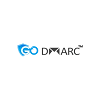Securing email communication is vital in the present digitally-driven atmosphere. As businesses strive to protect their reputation and safeguard their customers' trust, implementing robust email authentication mechanisms has become an essential practice. One of the key players in the realm of email authentication is DKIM (DomainKeys Identified Mail).
In this article, we'll delve into the intricacies of DKIM configuration for on-premises Exchange servers and shed light on its significance in conjunction with SPF & DMARC.
-
Understanding DKIM: Unveiling the Shield of Authenticity
A digital signature is included in outgoing emails thanks to the email authentication technique DKIM. This signature is created using a private key associated with the sending domain. When the email reaches the recipient's server, it checks the authenticity of the email by verifying the DKIM signature against the corresponding public key published in the domain's DNS records. If the signature matches, it confirms the email's integrity and the fact that it hasn't been altered during transit.
-
DKIM and DMARC: A Unified Front Against Spoofing and Phishing
To enhance email security, DKIM often joins forces with DMARC and SPF. It focuses on preventing sender address forgery by validating the sending IP address, while DKIM takes the protection a step further by digitally signing email content. DMARC acts as the policy enforcer, instructing the receiving server on how to handle emails that don't pass SPF and DKIM checks.
-
Configuring DKIM for On-Premises Exchange Servers: A Step-by-Step Approach
Setting up DKIM for on-premises Exchange servers involves a few crucial steps:
- Generate a DKIM Key Pair: Begin by generating a DKIM key pair. This consists of a private key that you'll keep secure and a corresponding public key that will be published in your DNS records.
- Configure DNS Records: Publish the public DKIM key in your DNS TXT records. This record is crucial for recipient servers to verify the DKIM signature.
- Enable DKIM Signing: Implement DKIM signing in your on-premises Exchange server. This involves adding the private key to your server's configuration, which will be used to sign outgoing emails.
- Monitor and Adjust: Regularly monitor DKIM email signatures and ensure they're being applied correctly. Adjust settings if necessary to ensure consistent authentication.
-
The Power of Email Authentication: DKIM and Beyond
By implementing DKIM alongside SPF and DMARC, businesses can significantly reduce the risk of phishing attacks, email spoofing, and domain impersonation. These authentication mechanisms collaborate to create a robust email security ecosystem, increasing the trustworthiness of your brand's email communication.
Summing Up!
In a digital world where cyber threats are ever-evolving, adopting strong email authentication measures is non-negotiable. DKIM, combined with SPF and DMARC, plays a pivotal role in establishing the authenticity of your brand's emails. GoDMARC is your primary security partner for all authentication needs.
Check out our 10-day free trial to know more about our excellent services.

No comments yet